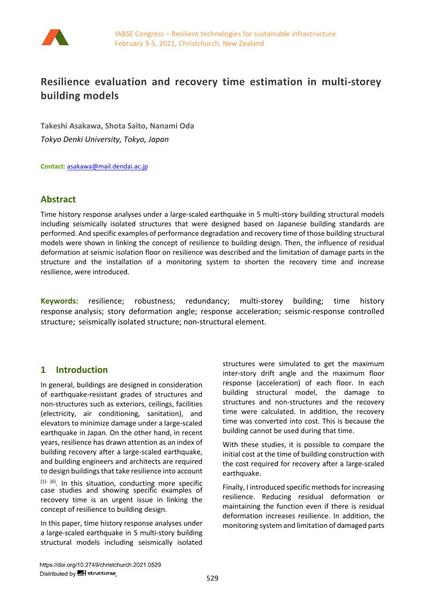Resilience evaluation and recovery time estimation in multi-storey building models

|
|
|||||||||||
Bibliographic Details
| Author(s): |
Takeshi Asakawa
(Tokyo Denki University, Tokyo, Japan)
Shota Saito (Tokyo Denki University, Tokyo, Japan) Nanami Oda (Tokyo Denki University, Tokyo, Japan) |
||||
|---|---|---|---|---|---|
| Medium: | conference paper | ||||
| Language(s): | English | ||||
| Conference: | IABSE Congress: Resilient technologies for sustainable infrastructure, Christchurch, New Zealand, 3-5 February 2021 | ||||
| Published in: | IABSE Congress Christchurch 2020 | ||||
|
|||||
| Page(s): | 529-536 | ||||
| Total no. of pages: | 8 | ||||
| DOI: | 10.2749/christchurch.2021.0529 | ||||
| Abstract: |
Time history response analyses under a large-scaled earthquake in 5 multi-story building structural models including seismically isolated structures that were designed based on Japanese building standards are performed. And specific examples of performance degradation and recovery time of those building structural models were shown in linking the concept of resilience to building design. Then, the influence of residual deformation at seismic isolation floor on resilience was described and the limitation of damage parts in the structure and the installation of a monitoring system to shorten the recovery time and increase resilience, were introduced. |
||||
| Keywords: |
robustness redundancy resilience seismic-response controlled structure seismically isolated structure multi-storey building time-history response analysis story deformation angle response acceleration non-structural element non-structural elements
|
||||
